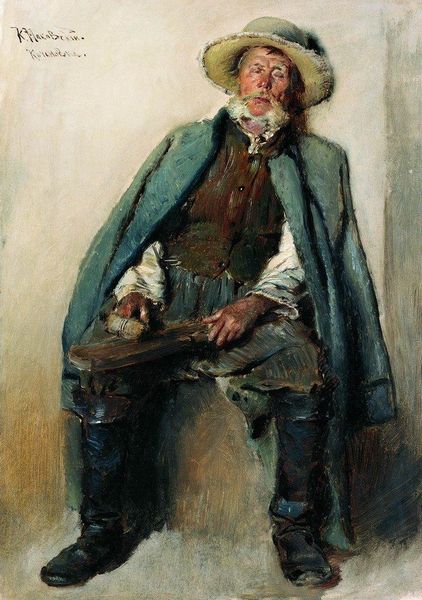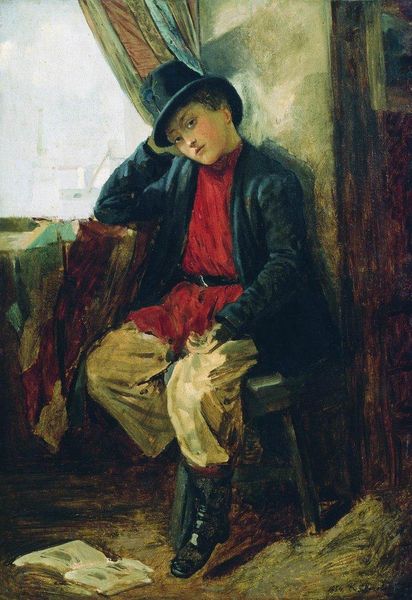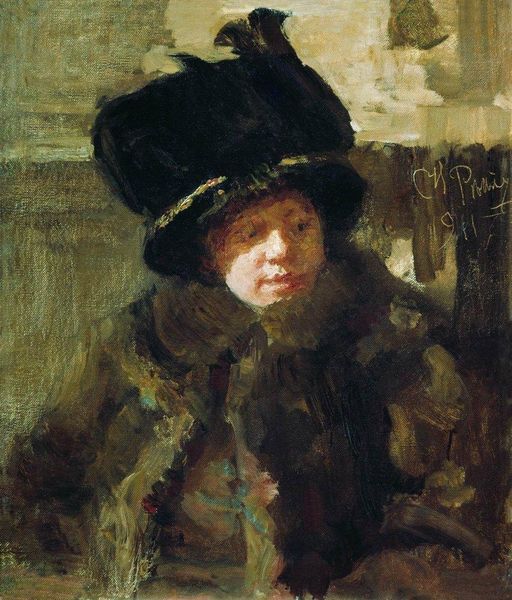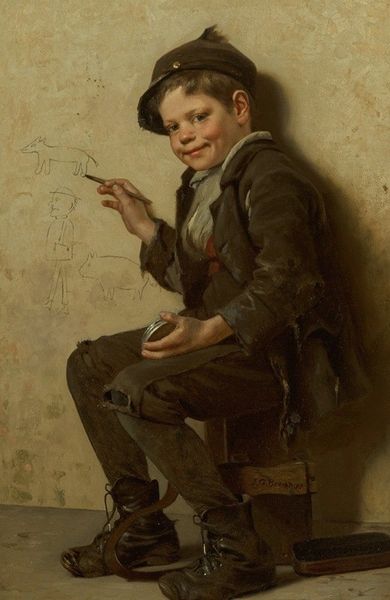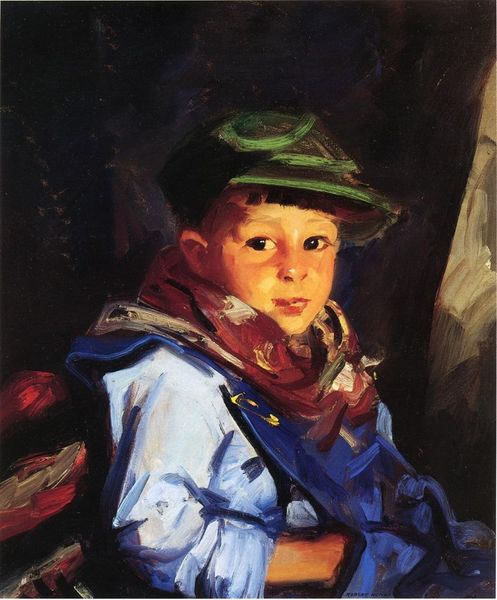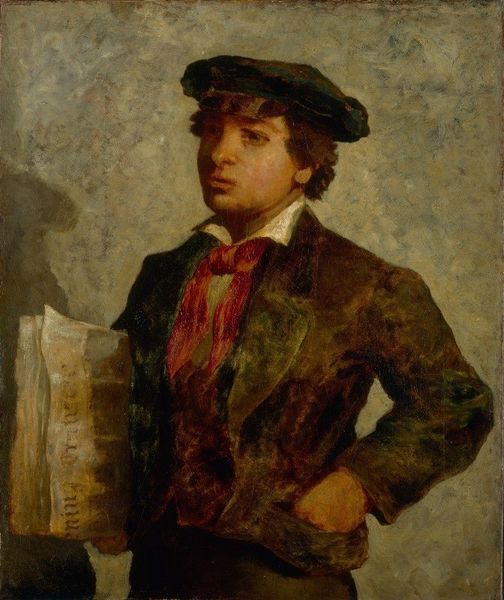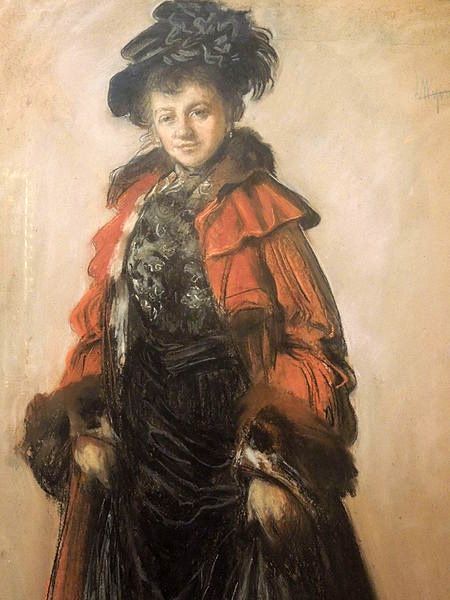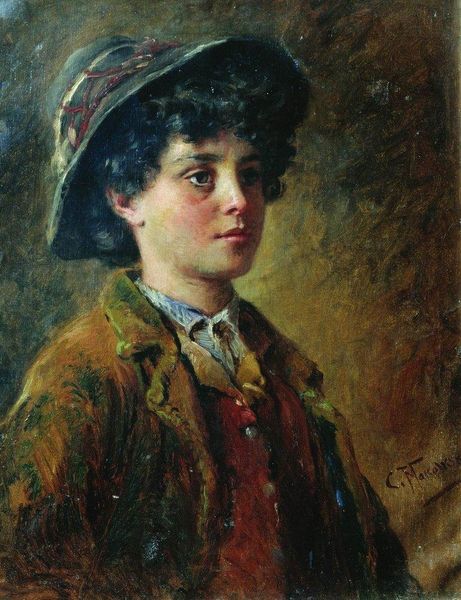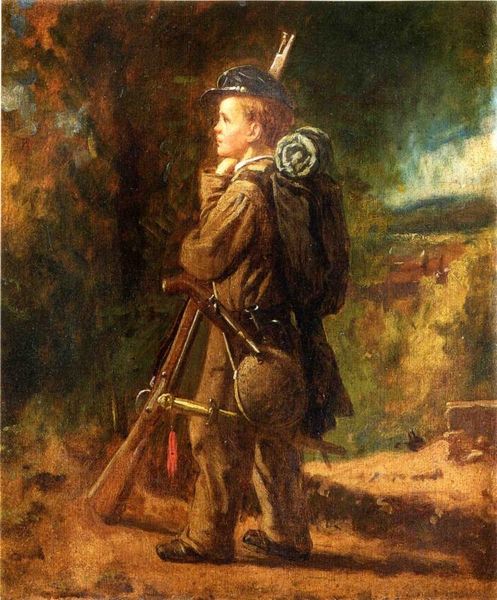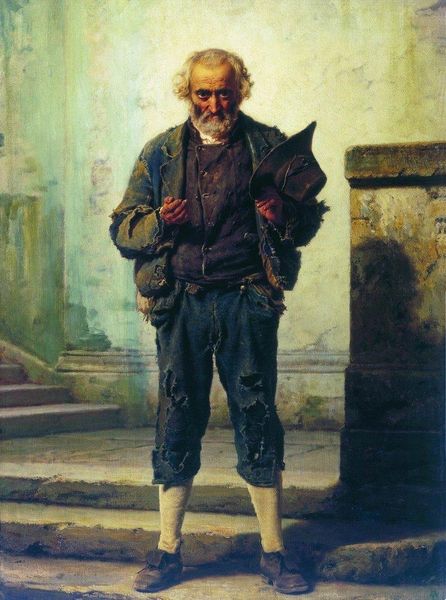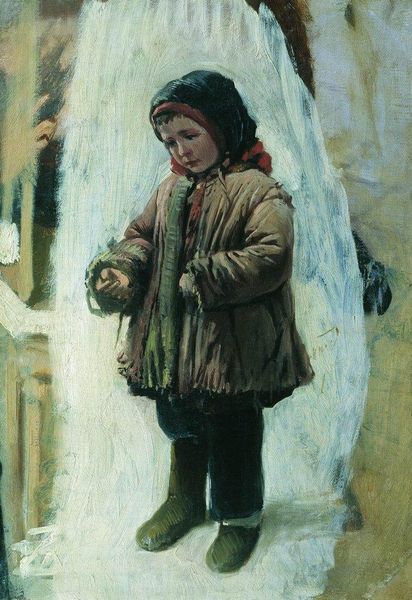
Copyright: Public domain
Konstantin Egorovich Makovsky painted Savoyard in 1872 with oil. It depicts a young boy in worn clothing, likely a street performer, in Venice. Makovsky was a prominent Russian painter, associated with the Peredvizhniki movement, which sought to depict scenes of everyday life and critique social inequalities. This painting offers a glimpse into the lives of the working class in 19th-century Venice. The boy's clothing indicates poverty, yet he holds himself with a certain dignity. The image raises questions about child labor, poverty, and the social hierarchy of the time. Makovsky's choice of subject reflects the Peredvizhniki's commitment to social realism. By examining historical documents, photographs, and other visual sources from the period, we can gain a deeper understanding of the social and economic conditions that shaped Makovsky's art. The meaning of art is always contingent on its social and institutional context.
Comments
No comments
Be the first to comment and join the conversation on the ultimate creative platform.
